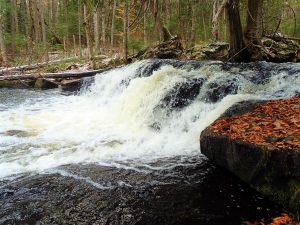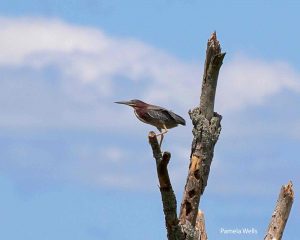
The Forest Society of Maine has a unique opportunity to conserve land in western Maine that is not only scenic and ecologically valuable, but is also known for being an American Battlefield of the Revolution. Coburn Gore Forest, bordered on three sides by Quebec, is the site of the last leg of the journey of the Benedict Arnold Expedition where he led more than 1,000 men from the Kennebec and Dead Rivers into Quebec to attack the Province in 1775. His attack ultimately ended in defeat. Painstakingly blazing their way through dense wilderness, the route, trail, or march as it’s known, was rife with suffering and hardship. Arnold lost one-third of his men on the journey and finally had to abandon the heavy, cumbersome bateaux (large wooden boats) used to travel up river from the coast.
The remoteness and terrain of the Chain of Ponds area around Coburn Gore has helped to preserve the archaeological sites along this historic route. As recently as 2017, the Maine Historic Preservation Commission, along with the Arnold Expedition Historical Society (AEHS), identified and assessed several more significant sites along the trail route. The Arnold Trail to Quebec was listed in the National Register of Historic Places in 1969. The exact trail location is not yet known but according to Kenny Wing of the AEHS, “every year we are narrowing down the trail more and more based on archaeological information.” FSM is working with a family landowner to establish a working forest conservation easement on 8,300 acres of Coburn Gore. This easement will not only prohibit residential and commercial development, but will forever protect the lands supporting the historic Arnold Trail.

